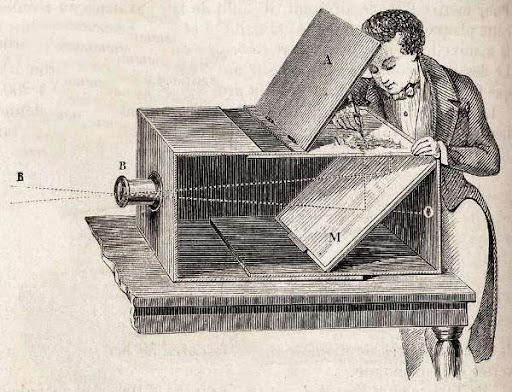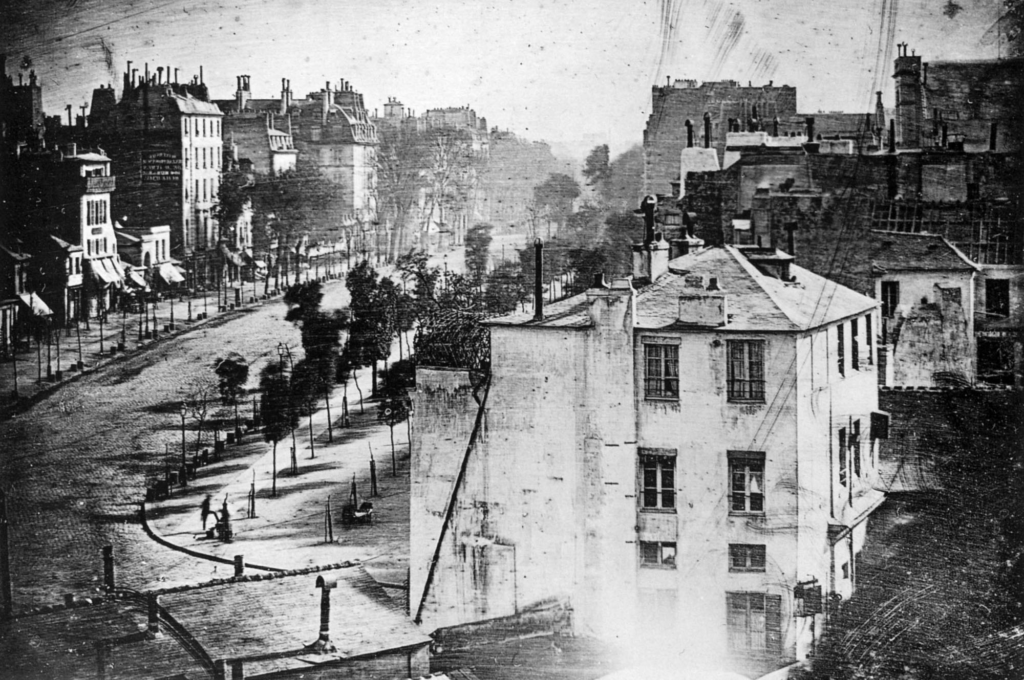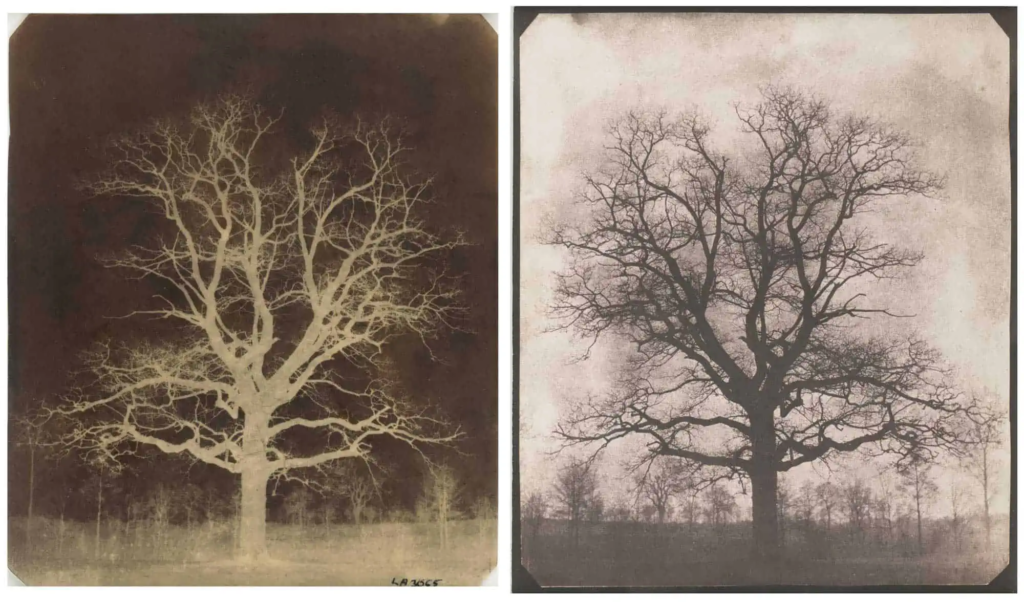During 1928, it was the invention of photography, and was described as ‘fixing the shadows.’ In terms of ‘shadows’ this could imply whatever the subject could have been, and what we see. As the camera was invented the image or shadows we see, were then fixed in terms of they weren’t just there when you looked to see them, instead they were brought to life through the image produced on the camera.
It was the frame around the image that was important, and what was further told beyond, through intuition. Photography turned the ordinary in the extra ordinary, displaying secrets beyond the world from what the people saw giving away specific moments, while keeping secrets from people.

This process created one off images which was described as mirror of the memory. The light operates differently as its being reflected. The images produced where best described as not alive but on edge of being present, taking hours if not days to be produced.
A plate was added to the camera that was polished , print was scratched and later poured with water.
- Camera Obscura & Pinhole photography
It began by using camera obscura, which is essentially a small camera box with a small whole in, which is how the image was created. The small whole is a tight beam of light that pours into the camera box. Light was reflected off of objects in the natural world entering the box through a lens of the small hole, and projected an upside down image on the opposing side. The pinhole was the lens, so if made smaller it achieved s sharper but dimmer image,, however if made too small there would be no image due to diffraction. Later on in practice , a lens was used rather than a pinhole, as this gives a larger aperture, so gives a correct brightness and stable focus.


Camera Obscura has been used since the 16th century, being a popular method used to help with drawings and paintings. The technology was further developed during the 19th century, as the camera box was later used to expose light sensitive objects and materials projecting the image. This method was effectively used to capture solar eclipses, as you weren’t at risk of directly looking at the sun. It produced highly accurate images which could later be used and studied.
- Joseph Nicephore Niepce & Heliography
The photographic process began in France named after Nicephore Niepce. Niepce is well known for making the earliest known photograph by nature that survived.
He new that by using Bitumen de Judea which is an acid resistant natural tar, would harden with exposure to light. So in experiments he use this to coat particular metals such as plates of glass, zinc, copper/ silver surfaced copper plus many more, which resulted in the surface that was exposed to the most light produced lavender oil and petroleum, leaving the uncoated shadow to be revealed through acid etching (acid cut into the metal revealing a design) as well as aquatint (revealed lines and tones, otherwise known for how colour was made).
Having limited success using light sensitive paper and a handmade camera obscura, didn’t however reveal a permanent image. So he adapted the process using low sensitivity estimating the exposure time would be 8 hours.
Below, the photograph is a View from the Window at Le Gras by Nicéphore Niépce, it is a heliographic image also know the oldest surviving image made by a camera.

https://www.hrc.utexas.edu/niepce-heliograph
- Louis Daguerre & Daguerreotype
Invented by Louis Daguerre during1940s and 1950s, ‘Daguerreotype,’ the name of the process and what the end image is called, was the most commonly used photographic process. During this period it was one of the first publicly available process used to make photographs, which is what made it so popular.
This process was created with a very detailed image on a copper plated sheet, then with another thin layer of silver. This was all without the use of a negative, making it only a positive process. To make the image the daguerreotypist would polish a sheet of silver plated copper until a mirror finish was displayed, treating it with fumes that made it light sensitive, then was highly exposed for as long as it was necessary until a latent image was produced, only visible by fuming it with mercury liquid vapor.



- Henry Fox Talbot & Calotype
Between 1800 – 1877, Talbot developed three primary stages of photography , developing, fixing and printing. He found that exposing light onto photographic paper, would actually produce an image, however this process required a long time to create an image. Soon after, he accidently discovered there was an image produced after a very short exposure – although this was only seen when chemically developed. The image was fixed with a chemical solution, which removed the light-sensitive silver enabling the picture to be viewed in bright lights. Talbot realised he could repeat the process of printing from the negative , allowing this process to make any number of positive prints called ‘calotype.’


- Richard Maddox
During 1871, Richard Maddox was an English photographer who invented ‘the lightweight dry gelatine plate’ process used for photography. Exposure happened while the emulsion was still wet and was further processed immediately, after exposure in the camera.
However his health started to become effected by the wet collodions ether vapour so he started to look for a substitute. So he suggested that chemical such as cadmium bromide and silver nitrate should be coated in a glass process of gelatine. Gelatine became useful when examining things under the microscope, with its specific use of holding and preserving things on a slide under a microscope. So he would trail a number of plates, exposing them through contact printing, by using other negatives and different exposure trials.
An advantage of this was that photographer could use commercial dry plates, which saved them making and preparing their own emulsions in a hand made darkroom. Cameras were later made to be hand held , had fast exposure times leading to snapshot photography leading to cinematography.
- George Eastman
Eastman was an American Entrepreneur founded the Eastman Kodak company. After spending lots of time experimenting in photography he sold a roll film camera which meant that amateur photography was now available to the general public for the first time.
Originally he had worked at a bank, before becoming interested in photography and later became the founder of Eastman Dry plate company which sold plates. In 1885, he experimented on creating flexible film rolls that could replace plates altogether and later given a license allowing him to sell the film roll. Then he switched his focus onto creating a camera where he could use it. In 1888 he was allowed to release, which was called the Kodak camera. Having film which could cover up as many as 100 exposures. After it had been used the camera was then sent back to Eastman Kodak company, where the company would process the film, make a print of each exposure, load another film, then send the camera back to the photographer.
Eastman became aware that most of his revenue came from the camera rolls rather than actual camera. So he primarily focused on selling this making it good quality and affordable to all. He also sold his camera rolls to other manufacturers.
- Kodak (Brownie)
Kodak otherwise known as brownie was a series of camera models made by George Eastman which was first released in the 1900s. Introducing snapshot photography, meant that it was very expensive costing families their wage for that whole month. A basic cardboard box camera with a very simple convex-concave lens (disperses a light beam by diffraction). It was invented for the Eastman Kodak Company, initially it was aimed at children, aiming for them to popularise photography. However the very simple design and operation meant it could produce very good results under the right conditions, therefore making it popular for all audiences.
Many iconic shot were taken on the Brownie. Bernice Palmer used Kodak Brownie 2A model A to photograph the iceberg that sunk the titanic, the survivors, the ship Palmer travelled on. Also they were taken to war used by soldiers.





- Film/Print photography
Film/Print photography is a strip of a transparent film base, with one side coated with gelatine emulsion with small microscopically light sensitive crystals. The sizes of the crystals determines the the sensitivity, contrast and resolution of the film. Each frame on the film separates each photograph.
Black and white photographic film consist of only one layer of silver halide crystals, which when exposed to light the silver halide is converted to metallic silver. This blocks the light, appearing as the black part of the film negative. Colour film has three sensitising layers, combining three sensitising dyes, the first layer is blue, followed by they yellow which stops any blue dye from mixing with the below layers. Again just like the black and white film, the silver crystals are converted to a metallic silver. The by products are combined with the chemicals which produce the coloured dyes.
- Digital Photogrpahy
Digital Photography uses cameras that contain arrays of electronic photodetector which interface to an analogue converter which produces images that are focused by a lens rather than the exposure on a photographic film. Digital images are created mostly by computer, without having to process the image in chemicals. Originally chemicals were used in the process to create the image as this would develop and stabilise it.
During the early 20th century digital photography had started becoming more mainstream, with smaller developments being made.
Digital cameras were marketed in the late 1990s, where professionals slowly started to use the cameras as much of their work required using digital files as demand was high. Then digital camera’s were made on phones.
- Robert Cornelius & self-portraiture

Robert Cornelius was an American photographer. His daguerreotype self-portrait was was taken in 1839 and was know for being the first accepted portrait taken in the United States. A portrait is a representation of a person in which the face is always the main focus, the person is often looking at the photographer which successfully engages the subject with the viewer. The photo isn’t a sap shot, it is a composed image of person that displays potential characteristics for the viewer such as their personality, mood, and likeness.
- Julia Margeret Cameron & Pictorialism
Inspired by illustrative images from mythology, Christianity and literature, she depicts this through her soft focus close-up images of famous Victorian men. ‘Soft Focus’ is an effect made when fine textures are blurred making sharp edges across the high contrasted areas.
With connections to pictorialism
Pictorialism is an art movement strongest between 1885 and 1915. There was no true meaning behind pictorialism, it was best described as a ‘focused on the beauty of subject matter and the perfection of composition rather than the documentation of the world as it is‘

Anya,
A quality blog post demonstrating thorough research and clear and concise paragraphs describing key developments within the origin of photography. Excellent use of images/ illustrations too.